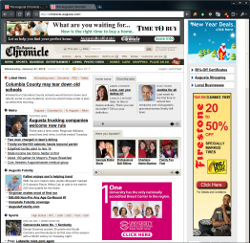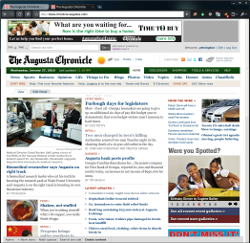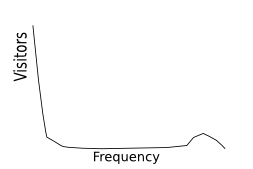Drupalization of Augusta
Submitted by yelvington on January 27, 2010 - 2:15pmThe new Augusta Chronicle website is now live, the latest in a series of conversions of Morris websites to a Drupal-based system.
Before and after


The new Augusta Chronicle website is now live, the latest in a series of conversions of Morris websites to a Drupal-based system.
Before and after


OK, one more post about the "soft paywall" concept and then I'll move on to something else.
Paid-content discussions tend to be dominated by religious wars -- declarations of belief, not fact -- so I want to do what I can to inject some facts when I can.
As I've pointed out repeatedly, averages are useless and segmentation is essential if we're going to understand human behavior and discover whether there is any real reader-revenue opportunity left in local journalism.
Pretty much everybody who's talking seriously these days about asking users to pay for news content is pointing at the same model: Leave the website open to casual visitors, but require heavy users to sign up as paying customers. Let people see perhaps half a dozen stories a month, but if they show signs of high interest, present them with a bill for the content they're consuming.
Point #2 of my Seven simple thoughts about the Mobile Web was "Your old website should Just Work. ... When someone wants to use your website from a mobile browser for whatever reason, including following a link that someone sent them through Twitter, it should detect the user's browser and deliver an appropriately formatted page."
So the New York Times has announced it will begin charging for access to its website, using a metered model similar to the one I discussed recently. The reactions have been predictable. I want to focus on one small angle: What we won't learn.
We won't learn a thing this year, because they're not doing it until 2011.
There's an incident from World War II that I think can teach us something about paid content.
At the end of the first war, the French built a series of defensive fortifications along the border with Germany called the Maginot Line. It was supposed to make it too expensive for the Germans to attack, because they would have to conquer heavily defended positions.
But the Germans simply avoided the line, using new technology to practice fast-moving "lightning war," crossing into Belgium, flanking the Maginot fortifications, and proceeding to Paris.
This is a message to prospective Drupal developers. I'm going to propose this as the First Rule of Coding for Drupal: We do not write code for Drupal.
If you believe all the hype coming out of CES at Las Vegas this week, this is the Year of the Tablet, and the Year of 3-D Television. The latter is easily dismissed (maybe 5 years from now, but not 2010). As for the former: I repeat what I said nearly three years ago. There's a bunch of hurdles to be overcome.
In the newsroom of the first daily newspaper that employed me, Editor & Publisher magazine was forbidden because of the employment classifieds that justified the "editor" part of its title. The editor regarded it as subversive literature, luring his staff to faraway places with the promise of riches, or at least a living wage.
If you're thinking about charging for content, this high-quality infographic could save you from making a big mistake:

What is this? It's the general shape of your typical newspaper website's user behavior over the course of a month.
This is a not a graph that your typical Web metrics system offers up without a struggle, but if you can force it to reveal this data, it's eye-opening. I first pulled this sort of curve out of a Tacoda system half a dozen years ago, and it changed a lot of my thinking.